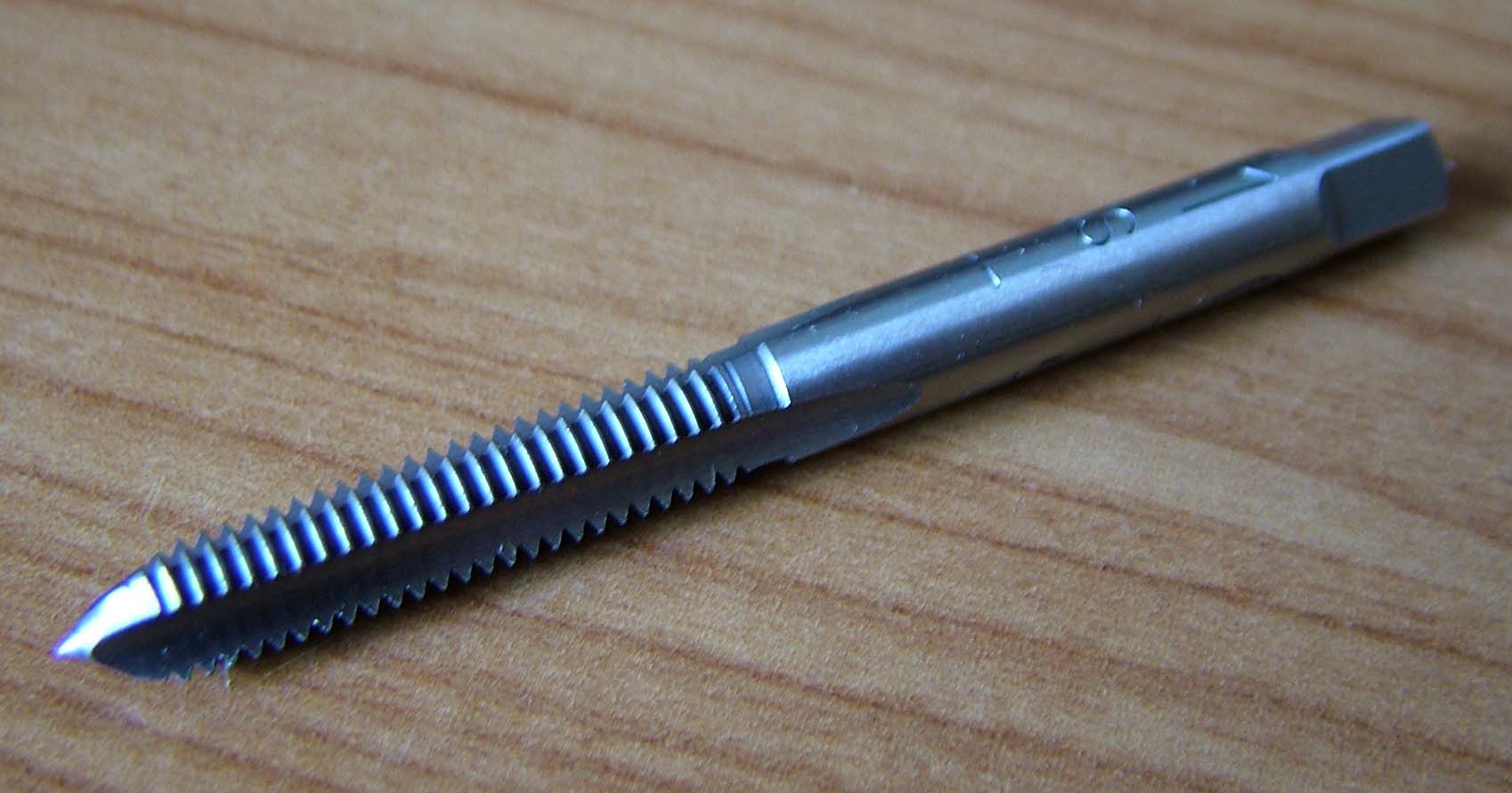| |
|
|
| Blind Hole |
|
A hole drilled into a material from one
side without penetrating the opposite side. |
| |
|
|
| Tap hole diameter |
|
This is the diameter of the
hole
that should be drilled prior to tapping the female thread |
| |
|
|
| Taper Tap |
 |
This is the initial tap used to
start the tapping process for a female thread. They have a long lead in of
7 to 10 threads. Also often referred to as '1st Tap'. For softer
materials it is often possible to go straight to a second tap. |
| |
|
|
| Second Tap |
 |
As the name suggests, this is
used after the taper tap to produce the full thread in 'through holes' or
'blind' holes where the thread does not need to go close to the bottom of
the hole. Sometimes referred to as 'intermediate taps' |
| |
|
|
| Bottom Tap |
 |
Used where the thread is
required to extend near to the bottom of a blind hole. Often termed a
'plug' tap in the UK. Note that the tips of the smaller sized bottom taps
are pointed. Larger taps for thread sizes of M8 & 5/16" and larger have
a flat end. |
| |
|
|
| Split Dies |
 |
Dies are used to cut male threads - i.e. as
on a screw. The most common form are split dies which enable some
adjustment of the diameter for increased accuracy and to compensate when
the die eventually wears. |
| |
|
|
| Tap Wrench / Handle |
 |
A tool for holding the tap
during the hand tapping process. We offer the option of a 'Tee Handle'
style (left) ideal for the smaller sizes, and the traditional adjustable tap
wrench type (below). |
| |
|
|
| Adjustable Tap Wrench |
 |
A tool for holding the tap
during the hand tapping process. The more traditional style with a larger
range capacity of tap sizes. Gives better control of the larger sizes. |
| |
|
|
| |
|
|
| Die Holder |
 |
A tool for holding the die
during the thread cutting process |
| |
|
|























